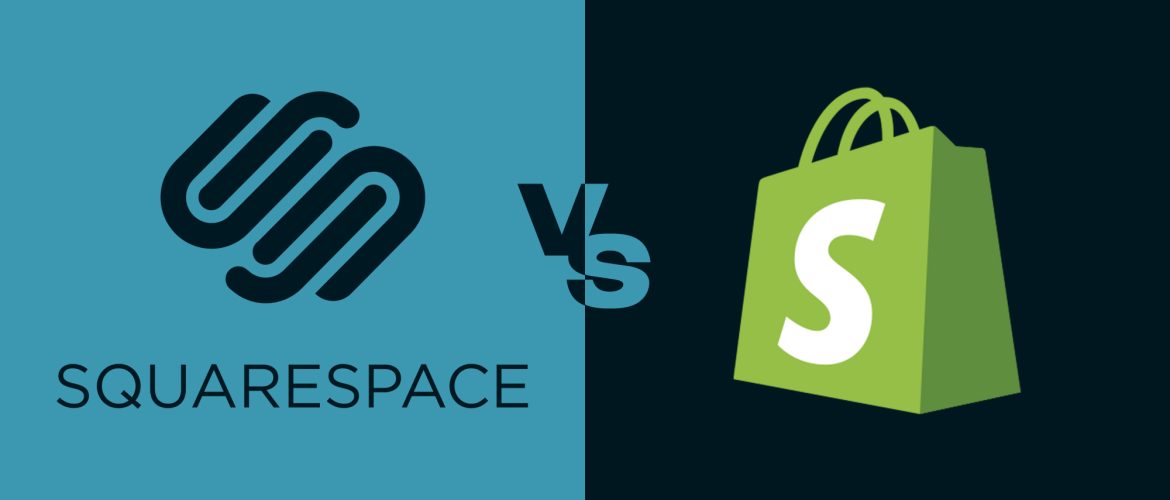The world of e-commerce is booming, and aspiring entrepreneurs are faced with a crucial decision: Shopify vs Squarespace. Both platforms offer user-friendly interfaces and tools to create an online store, but they cater to different needs. This head-to-head breakdown will help you navigate the key differences between Shopify and Squarespace and pick the one that best suits your business goals.
Understanding the Core Focus
The most significant distinction between Shopify and Squarespace lies in their core functionalities. Shopify is a dedicated e-commerce platform. Everything from its design to its extensive app store revolves around creating a seamless online selling experience. Squarespace, on the other hand, is a broader website builder that offers e-commerce features alongside website creation tools for portfolios, blogs, and business websites.
Ease of Use
Both Shopify and Squarespace boast user-friendly interfaces. Squarespace takes the crown for absolute beginners due to its drag-and-drop website builder and visually oriented approach. Shopify, while still user-friendly, requires a slightly steeper learning curve, especially when it comes to managing product listings and inventory. However, Shopify offers excellent tutorials and a supportive community to bridge the gap.
Design Flexibility
Squarespace shines in the design department. It offers a plethora of beautiful, pre-designed templates that cater to various industries. Customization within these templates is also impressive. Shopify’s templates, while functional and modern, offer less out-of-the-box variety. However, Shopify makes up for it with a vast app store that includes themes and design customization tools.
Ecommerce Features
This is where Shopify vs Squarespace truly diverges. Shopify boasts a robust suite of e-commerce features built-in, including product management, inventory control, secure payment gateways, shipping options, and built-in marketing tools. Squarespace’s e-commerce functionality feels more like an add-on. While it covers the basics of selling online, it lacks the depth and scalability of Shopify’s offerings.
Scalability and Growth
If you envision significant growth for your online store, Shopify is the clear winner in the Shopify vs Squarespace battle. Shopify’s app store provides access to a multitude of tools and integrations that can help you manage a high-volume store, expand your marketing reach, and automate tasks. Squarespace, while suitable for small-scale businesses, might struggle to keep pace with an explosive growth trajectory.
Pricing
Both Shopify and Squarespace offer tiered pricing plans. Squarespace’s plans are more straightforward, combining website building and e-commerce functionalities into a single package. Shopify separates its plans, with a base plan for online stores and additional fees for transaction processing. While Squarespace might appear cheaper initially, Shopify’s pricing becomes more competitive for higher-volume businesses due to its lower transaction fees.
Customer Support
Both platforms provide customer support options. Squarespace offers 24/7 email support and live chat, while Shopify provides 24/7 live chat support and phone support during specific hours. Additionally, Shopify boasts a vast community forum where users can help each other.
The Verdict: Shopify vs Squarespace: Picking Your Champion
The ideal platform for you in the Shopify vs Squarespace debate hinges on your specific needs.
Choose Shopify if:
- You prioritize robust e-commerce features and scalability.
- You plan on selling a high volume of products.
- You need access to a vast app store for customization and integration.
- You’re comfortable with a slightly steeper learning curve.
Choose Squarespace if:
- You prioritize a beautiful, easy-to-use website builder with basic e-commerce functionality.
- You’re a small business or starting with a limited product selection.
- You have limited technical experience and prefer a drag-and-drop approach.
Ultimately, there’s no single “best” platform in the Shopify vs Squarespace battle. Consider your business goals, technical expertise, and budget to make an informed decision. Both platforms offer free trials, so take advantage of them to explore their functionalities firsthand before committing.


